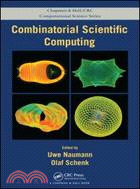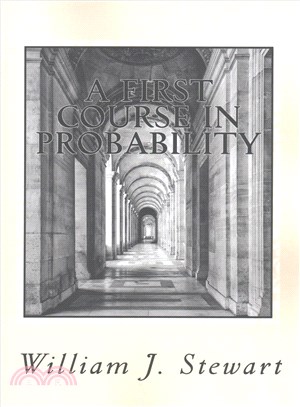Combinatorial Scientific Computing
商品資訊
系列名:Chapman & Hall/Crc Computational Science
ISBN13:9781439827352
出版社:Chapman & Hall
作者:Edited by Uwe Naumann and Olaf Schenk
出版日:2011/12/15
裝訂/頁數:精裝/600頁
規格:22.9cm*15.2cm*3.2cm (高/寬/厚)
版次:1
定價
:NT$ 8775 元優惠價
:90 折 7898 元
若需訂購本書,請電洽客服 02-25006600[分機130、131]。
商品簡介
作者簡介
目次
商品簡介
Combinatorial Scientific Computing explores the latest research on creating algorithms and software tools to solve key combinatorial problems on large-scale high-performance computing architectures. It includes contributions from international researchers who are pioneers in designing software and applications for high-performance computing systems.
The book offers a state-of-the-art overview of the latest research, tool development, and applications. It focuses on load balancing and parallelization on high-performance computers, large-scale optimization, algorithmic differentiation of numerical simulation code, sparse matrix software tools, and combinatorial challenges and applications in large-scale social networks. The authors unify these seemingly disparate areas through a common set of abstractions and algorithms based on combinatorics, graphs, and hypergraphs.
Combinatorial algorithms have long played a crucial enabling role in scientific and engineering computations and their importance continues to grow with the demands of new applications and advanced architectures. By addressing current challenges in the field, this volume sets the stage for the accelerated development and deployment of fundamental enabling technologies in high-performance scientific computing.
The book offers a state-of-the-art overview of the latest research, tool development, and applications. It focuses on load balancing and parallelization on high-performance computers, large-scale optimization, algorithmic differentiation of numerical simulation code, sparse matrix software tools, and combinatorial challenges and applications in large-scale social networks. The authors unify these seemingly disparate areas through a common set of abstractions and algorithms based on combinatorics, graphs, and hypergraphs.
Combinatorial algorithms have long played a crucial enabling role in scientific and engineering computations and their importance continues to grow with the demands of new applications and advanced architectures. By addressing current challenges in the field, this volume sets the stage for the accelerated development and deployment of fundamental enabling technologies in high-performance scientific computing.
作者簡介
Uwe Naumann is an associate professor of computer science at RWTH Aachen University. Dr. Naumann has published more than 80 peer-reviewed papers and chaired several workshops. His research focuses on algorithmic differentiation, combinatorial graph algorithms, high-performance scientific computing, and the application of corresponding methods to real-world problems in computational science, engineering, and finance.
Olaf Schenk is an associate professor of computer science at the University of Lugano. Dr. Schenk has published more than 70 peer-reviewed book chapters, journal articles, and conference contributions. In 2008, he received an IBM Faculty Award on Cell Processors for Biomedical Hyperthermia Applications. His research interests include algorithmic and architectural problems in computational mathematics, scientific computing, and high-performance computing.
Olaf Schenk is an associate professor of computer science at the University of Lugano. Dr. Schenk has published more than 70 peer-reviewed book chapters, journal articles, and conference contributions. In 2008, he received an IBM Faculty Award on Cell Processors for Biomedical Hyperthermia Applications. His research interests include algorithmic and architectural problems in computational mathematics, scientific computing, and high-performance computing.
目次
Combinatorial Scientific Computing: Past Successes, Current Opportunities, Future Challenges, Bruce Hendrickson and Alex PothenIntroduction The CSC Community Current Opportunities Future ChallengesConclusions
Combinatorial Problems in Solving Linear Systems, Iain Duff and Bora UçarIntroduction Basics Direct MethodsIterative MethodsConclusions
Combinatorial Preconditioners, Sivan Toledo and Haim AvronIntroduction Symmetric Diagonally Dominant Matrices and GraphsSupport TheoryEmbeddings and Combinatorial Support BoundsCombinatorial Preconditioners
Scalable Hybrid Linear Solvers, Madan Sathe, Olaf Schenk, Bora Uçar, and Ahmed SamehIntroduction PSPIKE—A Scalable Hybrid Linear Solver Combinatorics in the Hybrid Solver PSPIKEComputational Results in PDE-Constrained OptimizationConclusion
Combinatorial Problems in Algorithmic Differentiation, Uwe Naumann and Andrea WaltherIntroduction Compression TechniquesData Flow ReversalElimination TechniquesSummary and Conclusion
Combinatorial Problems in OpenAD, Jean Utke and Uwe NaumannIntroduction Computational GraphsReversal Schemes
Getting Started with ADOL-C, Andrea Walther and Andreas GriewankIntroduction Preparing a Code Segment for Differentiation Easy-to-Use Drivers Reusing the Pre-Value Tape for Arbitrary Input Values Suggestions for Improved Efficiency Advance Algorithmic Differentiation in ADOL-C Tapeless Forward Differentiation Conclusions and Further Developments
Algorithmic Differentiation and Nonlinear Optimization for an Inverse Medium Problem, Johannes Huber, Olaf Schenk, Uwe Naumann, Ebadollah Varnik, and Andreas WächterIntroduction The Inverse Medium ProblemLarge-Scale Nonlinear Optimization and IPOPT Closed Form of Derivatives Algorithmic DifferentiationSparse Linear Algebra and PARDISONumerical Experiments
Combinatorial Aspects/Algorithms in Computational Fluid Dynamics, Rainald LöhnerSystem of Conservation Laws Grid Size Estimates Work Estimates for Different Shape-FunctionsBasic Data Structures and LoopsExample: Blast in Room Conclusions and Outlook
Unstructured Mesh Generation, Jonathan Richard ShewchukIntroduction MeshesMethods of Mesh GenerationGuaranteed-Quality Mesh Generation
3D Delaunay Mesh Generation, Klaus Gärtner, Hang Si, Alexander Rand, and Noel WalkingtonIntroduction Delaunay Refinement Termination and Output SizeHandling Small Input AnglesImplementation and Examples
Two-Dimensional Approaches to Sparse Matrix Partitioning, Rob H. Bisseling, Bas O. Fagginger Auer, A.N. Yzelman, Tristan van Leeuwen, and Űmit V. ÇatalyürekIntroduction Sparse Matrices and Hypergraphs Parallel Sparse Matrix–Vector MultiplicationCoarse-Grain PartitioningFine-Grain Partitioning The Hybrid Partitioning Algorithm Time ComplexityExperimental Results Conclusions and Outlook
Parallel Partitioning, Ordering, and Coloring in Scientific Computing, E.G. Boman, C. Chevalier, K.D. Devine, and U.V. CatalyurekIntroduction Partitioning and Load BalancingColoringOrdering
Scotch and PT-Scotch Graph Partitioning Software: An Overview, François PellegriniIntroduction The Problems to SolveGeneral Architecture of the Scotch libraryMultilevel FrameworkParallel Graph Coarsening AlgorithmsParallel Partition Refinement AlgorithmsPerformance Issues Conclusion and Future Works
Massively Parallel Graph Partitioning: A Case in Human Bone Simulations, C. Bekas, A. Curioni, P. Arbenz, C. Flaig, G.H. van Lenthe, R. Müller, and A.J. WirthIntroduction Computational Model The StudyConclusion
Algorithmic and Statistical Perspectives on Large-Scale Data Analysis, Michael W. MahoneyIntroduction Diverse Approaches to Modern Data Analysis Problems Genetics Applications and Novel Matrix AlgorithmsInternet Applications and Novel Graph AlgorithmsConclusions and Future Directions
Computational Challenges in Emerging Combinatorial Scientific Computing Applications, David A. Bader and Kamesh MadduriIntroduction Analysis of Social and Technological Networks Combinatorial Problems in Computational Biology Summary and Concluding Remarks
Spectral Graph Theory, Daniel SpielmanIntroduction Preliminaries The Matrices Associated with a GraphSome Examples The Role of the Courant-Fischer Theorem Elementary Facts Spectral Graph Drawing Algebraic Connectivity and Graph PartitioningColoring and Independent Sets Perturbation Theory and Random Graphs Relative Spectral Graph Theory Directed Graphs Concluding Remarks
Algorithms for Visualizing Large Networks, Yifan HuIntroduction Algorithms for Drawing Large GraphsExamples of Large Graph Drawings Conclusions
A Bibliography appears at the end of each chapter.
Combinatorial Problems in Solving Linear Systems, Iain Duff and Bora UçarIntroduction Basics Direct MethodsIterative MethodsConclusions
Combinatorial Preconditioners, Sivan Toledo and Haim AvronIntroduction Symmetric Diagonally Dominant Matrices and GraphsSupport TheoryEmbeddings and Combinatorial Support BoundsCombinatorial Preconditioners
Scalable Hybrid Linear Solvers, Madan Sathe, Olaf Schenk, Bora Uçar, and Ahmed SamehIntroduction PSPIKE—A Scalable Hybrid Linear Solver Combinatorics in the Hybrid Solver PSPIKEComputational Results in PDE-Constrained OptimizationConclusion
Combinatorial Problems in Algorithmic Differentiation, Uwe Naumann and Andrea WaltherIntroduction Compression TechniquesData Flow ReversalElimination TechniquesSummary and Conclusion
Combinatorial Problems in OpenAD, Jean Utke and Uwe NaumannIntroduction Computational GraphsReversal Schemes
Getting Started with ADOL-C, Andrea Walther and Andreas GriewankIntroduction Preparing a Code Segment for Differentiation Easy-to-Use Drivers Reusing the Pre-Value Tape for Arbitrary Input Values Suggestions for Improved Efficiency Advance Algorithmic Differentiation in ADOL-C Tapeless Forward Differentiation Conclusions and Further Developments
Algorithmic Differentiation and Nonlinear Optimization for an Inverse Medium Problem, Johannes Huber, Olaf Schenk, Uwe Naumann, Ebadollah Varnik, and Andreas WächterIntroduction The Inverse Medium ProblemLarge-Scale Nonlinear Optimization and IPOPT Closed Form of Derivatives Algorithmic DifferentiationSparse Linear Algebra and PARDISONumerical Experiments
Combinatorial Aspects/Algorithms in Computational Fluid Dynamics, Rainald LöhnerSystem of Conservation Laws Grid Size Estimates Work Estimates for Different Shape-FunctionsBasic Data Structures and LoopsExample: Blast in Room Conclusions and Outlook
Unstructured Mesh Generation, Jonathan Richard ShewchukIntroduction MeshesMethods of Mesh GenerationGuaranteed-Quality Mesh Generation
3D Delaunay Mesh Generation, Klaus Gärtner, Hang Si, Alexander Rand, and Noel WalkingtonIntroduction Delaunay Refinement Termination and Output SizeHandling Small Input AnglesImplementation and Examples
Two-Dimensional Approaches to Sparse Matrix Partitioning, Rob H. Bisseling, Bas O. Fagginger Auer, A.N. Yzelman, Tristan van Leeuwen, and Űmit V. ÇatalyürekIntroduction Sparse Matrices and Hypergraphs Parallel Sparse Matrix–Vector MultiplicationCoarse-Grain PartitioningFine-Grain Partitioning The Hybrid Partitioning Algorithm Time ComplexityExperimental Results Conclusions and Outlook
Parallel Partitioning, Ordering, and Coloring in Scientific Computing, E.G. Boman, C. Chevalier, K.D. Devine, and U.V. CatalyurekIntroduction Partitioning and Load BalancingColoringOrdering
Scotch and PT-Scotch Graph Partitioning Software: An Overview, François PellegriniIntroduction The Problems to SolveGeneral Architecture of the Scotch libraryMultilevel FrameworkParallel Graph Coarsening AlgorithmsParallel Partition Refinement AlgorithmsPerformance Issues Conclusion and Future Works
Massively Parallel Graph Partitioning: A Case in Human Bone Simulations, C. Bekas, A. Curioni, P. Arbenz, C. Flaig, G.H. van Lenthe, R. Müller, and A.J. WirthIntroduction Computational Model The StudyConclusion
Algorithmic and Statistical Perspectives on Large-Scale Data Analysis, Michael W. MahoneyIntroduction Diverse Approaches to Modern Data Analysis Problems Genetics Applications and Novel Matrix AlgorithmsInternet Applications and Novel Graph AlgorithmsConclusions and Future Directions
Computational Challenges in Emerging Combinatorial Scientific Computing Applications, David A. Bader and Kamesh MadduriIntroduction Analysis of Social and Technological Networks Combinatorial Problems in Computational Biology Summary and Concluding Remarks
Spectral Graph Theory, Daniel SpielmanIntroduction Preliminaries The Matrices Associated with a GraphSome Examples The Role of the Courant-Fischer Theorem Elementary Facts Spectral Graph Drawing Algebraic Connectivity and Graph PartitioningColoring and Independent Sets Perturbation Theory and Random Graphs Relative Spectral Graph Theory Directed Graphs Concluding Remarks
Algorithms for Visualizing Large Networks, Yifan HuIntroduction Algorithms for Drawing Large GraphsExamples of Large Graph Drawings Conclusions
A Bibliography appears at the end of each chapter.
主題書展
更多
主題書展
更多書展今日66折
您曾經瀏覽過的商品
購物須知
外文書商品之書封,為出版社提供之樣本。實際出貨商品,以出版社所提供之現有版本為主。部份書籍,因出版社供應狀況特殊,匯率將依實際狀況做調整。
無庫存之商品,在您完成訂單程序之後,將以空運的方式為你下單調貨。為了縮短等待的時間,建議您將外文書與其他商品分開下單,以獲得最快的取貨速度,平均調貨時間為1~2個月。
為了保護您的權益,「三民網路書店」提供會員七日商品鑑賞期(收到商品為起始日)。
若要辦理退貨,請在商品鑑賞期內寄回,且商品必須是全新狀態與完整包裝(商品、附件、發票、隨貨贈品等)否則恕不接受退貨。
























